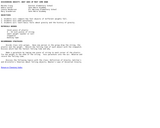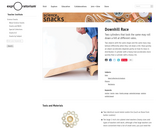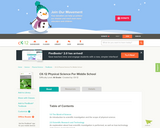
Design and build a sleigh using a WeDo kit, K’nex or similar, that will pull a specific measured weight.
- Subject:
- Science
- Material Type:
- Activity/Lab
- Author:
- William Allred
- Carrie Robledo
- Date Added:
- 04/30/2020

Design and build a sleigh using a WeDo kit, K’nex or similar, that will pull a specific measured weight.

Students will explain how various forces affect the motion of an object.
Students know that a magnet pulls on all things made of iron without touching them, and that this pulling can result in motion. Students know that a magnet attracts some metals, but not all of them. Students know that a magnet has a force field and poles that determine how a metal affected by the magnet will behave within its field.
Students will make a car move using the forces of magnets to turn around, go backwards, and drive along a path without touching it.

Students will drop a small weight attached to a string, once without a parachute and once with a parachute and compare how fast each falls.

In this activity, students explore how two cylinders that look the same may roll down a hill at different rates.

Through this lesson, students learn about the four forces of flight: lift, thrust, drag, and weight. They evaluate the role design plays on aerodynamics and the distance a paper airplane travels.

In this activity, students play catch with a friend and observe what happens to the ball. Students then click on links to watch short video clips of balls being thrown and dropped. After predicting what will happen, students watch video clips of different sized balls being dropped and compare the dropping rates. Students analyze their observations with provided questions.

This PBL project required students to design, build, and then explain a working Rube Goldberg Machine as a way to demonstrate mastery of Newton's Laws.

In this short video and accompanying experiment activity and readings, students learn about all kinds of forces in motion at Falls Lake State Recreation Area. Chopping wood, riding a bike, pitching a tent, canoeing — students can see each of these examples to discover out how objects (and people) move in their surroundings.

A complete introduction to scientific investigation and the scope of physical science. Includes: states of matter, atoms, periodic table, chemical bonding, chemical reactions, carbon chemistry, chemistry of solutions, nuclear chemistry, motion, forces, Newton's Laws of Motion, work and machines, energy, waves, sound, electromagnetic radiation, visible light, electricity, and magnetism.

7th Grade Integrated Science textbook for the 2019-2020 school year. This textbook was developed to align to the Utah Science Core Curriculum. (Updated: May 29, 2019)